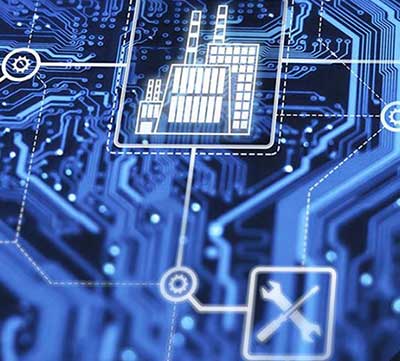Relevance: GS-3: Science and Technology- Developments and their Applications and Effects in Everyday Life
Key Phrases: labour-intensive; merging the physical, digital and biological worlds; distinct in velocity, scope and systems impact.
Context:
- The 4th Industrial Revolution (IR) is increasingly being adopted by the industry and the people. It is transforming how decisions are made and enhancing the ease of living of people across different spectrums.
- But, the shift in technology also has a transformative effect on how labour is being used in production processes. As India is a labour-intensive country, it must choose its path carefully to derive maximum benefits out of the changes brought forth by the 4th IR.
What is The 4th IR?
- World Economic Forum (WEF) describe the 4th IR as a new chapter
in human development, enabled by extraordinary technological advances
commensurate with those of the first, second and third industrial
revolutions. These advances are merging the physical, digital and biological
worlds in ways that create both huge promise and potential peril.
- For instance, the Internet of Things (which observes and suggests our daily routine decisions on the basis of our bodily requirements) is part of the 4th IR.
- The 1st Industrial Revolution used water and steam power to mechanize production.
- The 2nd used electric power to create mass production.
- The 3rd used electronics and information technology to automate production.
Comparative Analysis:
- During the 1st two industrial revolutions, India was a colony,
underdeveloped and exploited. It wasn’t placed well to utilise the
opportunities to its advantage. Rather, it became subservient to those who
utilised these opportunities well.
- Small economy: When India got its Independence, India’s GDP in 1947 at today’s prices was less than the market cap of Hindustan Unilever today.
- India took part in the 3rd industrial revolution, but the economy was coming out of the shackles of controls.
- Now a 4th IR is building on the 3rd but is distinct in velocity,
scope and systems impact.
- Velocity: the 4th IR is evolving at an exponential rather than a linear pace.
- Scope: It is disrupting almost every industry in every country.
- Systems impact: The breadth and depth of the changes introduced, transform entire systems of production, management, and governance.
- It is characterised by a fusion of technologies that is blurring the lines between the physical, digital, and biological spheres.
Case Study: Containers and 4th IR
- As per WTO, the shipping container changed world trade almost 70 years ago and enabled globalisation.
- Technologies such as 5G cellular networks, AI, blockchain and distributed ledger technology (DLT) will change the landscape of global production and trade over the next few decades.
How Has the Indian Industry Transformed?
- It is becoming adept at exploring and adopting new trends.
- According to the International Federation of Robotics, the industries in India have installed robots at 20% (2008-20) as against 15% recorded worldwide.
Potential Benefits of These Changes:
- Long-term gains in efficiency and productivity through tech-led innovations.
- Dropping of costs in manufacturing, transportation and communication.
- Effective logistics and supply chains.
- All of these will open new markets and drive economic growth.
Demand-side Changes:
- Growing transparency
- Increased consumer engagement
- New patterns of consumer behaviour built upon access to mobile networks
- All of this has forced companies to adapt the way they design, market, and deliver products and services.
Challenges:
- The revolution could yield greater inequality, particularly in its potential to disrupt labour markets.
- As automation substitutes for labour across the entire economy, the net
displacement of workers by machines might deteriorate the gap between
returns to capital and returns to labour.
- Loss of income, job losses, and structural unemployment will become a sad part of reality.
Way Forward:
- Directing the course of revolution to suit the needs of the society
- Charles Schwab of the World Economic Forum has said that all of us are responsible for guiding the 4th IR’s evolution, as citizens, consumers, and investors.
- 4th IR should be directed towards a future that reflects common objectives and values.
- Extensive skilling, re-skilling and up-skilling of the workforce
- On observing the 3 revolutions, the overall growth in the economy could in aggregate result in a net increase in safe and rewarding jobs.
- Utilising India as a data powerhouse
- 1.5 Bn people connected by mobile devices with unprecedented processing power, storage capacity and access to knowledge will soon be a reality.
- The benefits from this will be multiplied by breakthroughs in fields such as artificial intelligence, robotics, the Internet of Things, autonomous vehicles, 3-D printing, nanotechnology, biotechnology, materials science, energy storage, and quantum computing.
Conclusion:
- The vision for the Indian economy is increasingly based on the basic foundations of the digital economy.
- As aptly said by the Prime Minister: “For us, technology is the basis for making the country self-reliant.”.
- Together, India can be transformed into an innovation and technology-led economy.
Source: The Hindu BL
Mains Question:
Q.What is the 4th IR? What are its challenges and benefits? How can India utilise the maximum benefits out of the 4th IR?







